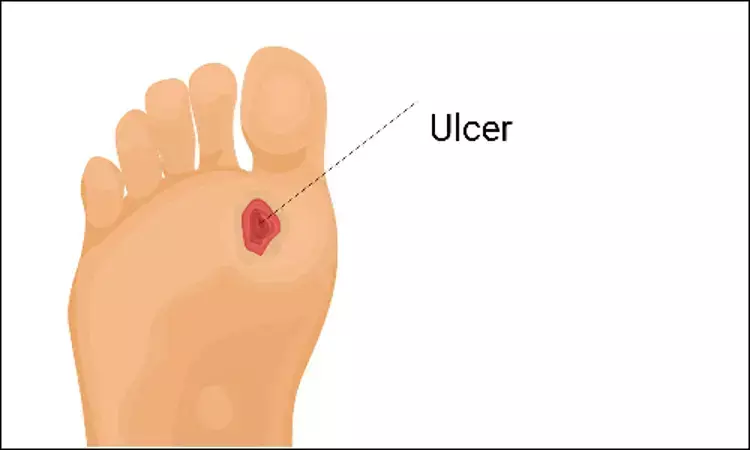- Home
- Medical news & Guidelines
- Anesthesiology
- Cardiology and CTVS
- Critical Care
- Dentistry
- Dermatology
- Diabetes and Endocrinology
- ENT
- Gastroenterology
- Medicine
- Nephrology
- Neurology
- Obstretics-Gynaecology
- Oncology
- Ophthalmology
- Orthopaedics
- Pediatrics-Neonatology
- Psychiatry
- Pulmonology
- Radiology
- Surgery
- Urology
- Laboratory Medicine
- Diet
- Nursing
- Paramedical
- Physiotherapy
- Health news
- Fact Check
- Bone Health Fact Check
- Brain Health Fact Check
- Cancer Related Fact Check
- Child Care Fact Check
- Dental and oral health fact check
- Diabetes and metabolic health fact check
- Diet and Nutrition Fact Check
- Eye and ENT Care Fact Check
- Fitness fact check
- Gut health fact check
- Heart health fact check
- Kidney health fact check
- Medical education fact check
- Men's health fact check
- Respiratory fact check
- Skin and hair care fact check
- Vaccine and Immunization fact check
- Women's health fact check
- AYUSH
- State News
- Andaman and Nicobar Islands
- Andhra Pradesh
- Arunachal Pradesh
- Assam
- Bihar
- Chandigarh
- Chattisgarh
- Dadra and Nagar Haveli
- Daman and Diu
- Delhi
- Goa
- Gujarat
- Haryana
- Himachal Pradesh
- Jammu & Kashmir
- Jharkhand
- Karnataka
- Kerala
- Ladakh
- Lakshadweep
- Madhya Pradesh
- Maharashtra
- Manipur
- Meghalaya
- Mizoram
- Nagaland
- Odisha
- Puducherry
- Punjab
- Rajasthan
- Sikkim
- Tamil Nadu
- Telangana
- Tripura
- Uttar Pradesh
- Uttrakhand
- West Bengal
- Medical Education
- Industry
Sedentary behavior increases risk of foot ulcer in Diabetic peripheral neuropathy: Study

UK: Patients with diabetic peripheral neuropathy (DPN) who spend at least 12 hours of sedentary time are more likely to develop a foot ulcer, finds a recent study in the journal Diabetes Research and Clinical Practice.
According to the study, sedentary behavior is an independent predictor of foot ulcer risk in DPN patients. This suggests that sedentary time should be monitored and standard care for diabetes patients should include strategies aimed at reducing it.
Diabetic foot ulcers (DFUs) is the most common complication of diabetes mellitus affecting about 1 in 4 people with diabetes. Foot ulceration and its sequelae are associated with greater mortality and poor quality of life.
Giorgio Orlando, Manchester Metropolitan University, Manchester, UK, and colleagues aimed to prospectively explore the association between sedentary time (SED-time) and the development of diabetic foot ulcer in people with diabetic peripheral neuropathy.
175 DPN patients who attended the annual evaluation for the SAMBA Study (2012-2019) were included. Main outcome measure was the first diagnosis of DFU. Using the PAS 2.1 questionnaire, the researchers measured the SED-time.
Nerve function was evaluated by nerve conduction studies. Vascular function was assessed by Ankle-brachial index (ABI) and pedal pulses. Foot deformity and skin dryness were examined by visual inspection.
Key findings of the study include:
· 35.5% of the participants developed a DFU during the study.
· SED-time was significantly higher in people who developed DFUs (12.8±3.0 vs 9.4±3.1 h/day).
· Logistic regression showed that among several nervous (motor amplitude, OR 0.33; sensory amplitude, 0.85) and vascular parameters (ABI, 0.23; pedal pulses, 2.81) and foot characteristics (deformity, 2.63; skin dryness, 2.04), SED-time was one of the strongest variables contributing to the development of DFUs (2.95).
"SED-time is an independent predictor of the risk of DFU in people with DPN. The monitoring of SED-time with strategies aimed at reducing it should be included in the standard care of diabetic patients," concluded the authors.
Reference:
The study titled, "Sedentary behaviour is an independent predictor of diabetic foot ulcer development: An 8-Year prospective study," is published in the journal Diabetes Research and Clinical Practice.
DOI: https://www.diabetesresearchclinicalpractice.com/article/S0168-8227(21)00236-9/fulltext
Dr Kamal Kant Kohli-MBBS, DTCD- a chest specialist with more than 30 years of practice and a flair for writing clinical articles, Dr Kamal Kant Kohli joined Medical Dialogues as a Chief Editor of Medical News. Besides writing articles, as an editor, he proofreads and verifies all the medical content published on Medical Dialogues including those coming from journals, studies,medical conferences,guidelines etc. Email: drkohli@medicaldialogues.in. Contact no. 011-43720751


